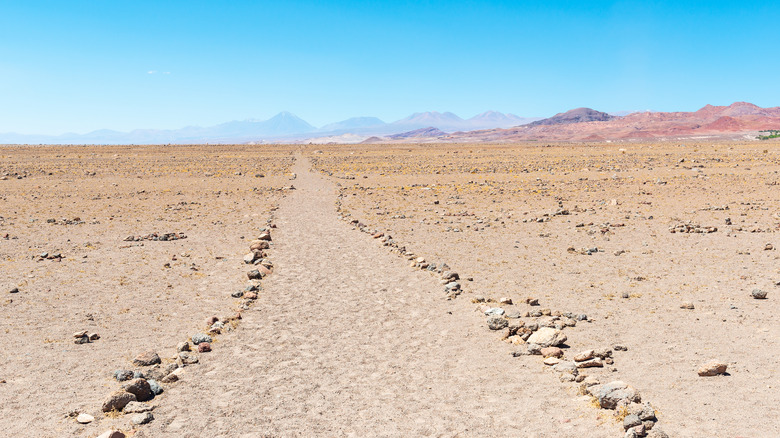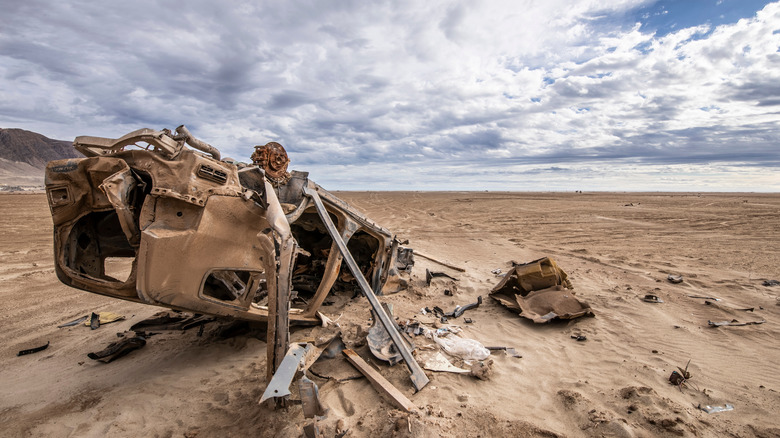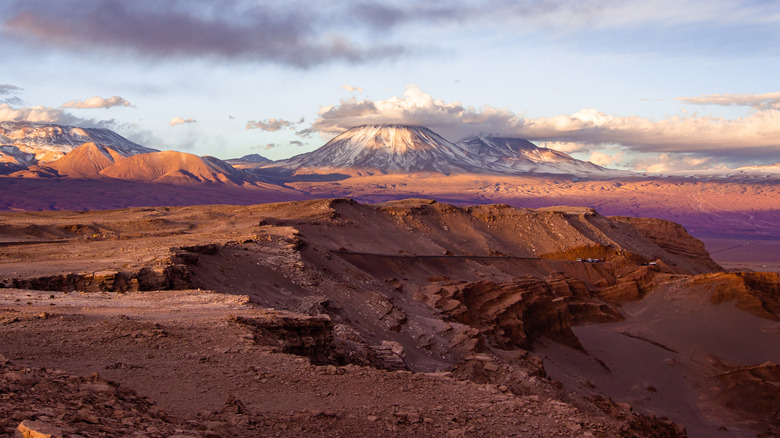One Chilean Desert Faced Major Devastation After Its First Rainfall In Centuries
When rainfall hits dry patches of land, you might think it provides much-needed moisture. But rain can actually be devastating if environments aren't prepared for it. That includes drought-stricken regions like the Atacama desert in Chile.
This land is exceedingly dry, receiving less rainfall than anywhere else in the world except for Antarctica, according to Conde Nast Traveler. One town in the Atacama area actually received no rain at all for over 400 years, and there are other places in the region that haven't received rain in recorded history.
This dry environment may seem like it would be totally devoid of life, but in fact there are hosts of creatures, including hearty plants and sturdy microbes, that not only survive but thrive in these conditions. Years of evolution have primed them to be well-suited to a dry environment — just as well-suited as a whale is to wetness.
But evolution can have its downsides. As a series of floods in 2015 demonstrated, when the rain does come, it can wreak havoc (via Phys Org).
Why rainfall in the desert can be dangerous
As strange as it may sound, dry soil, especially desert soil, is worse at absorbing moisture than damp soil. This is due to a variety of factors, according to the University of California at Santa Barbara. For one, the composition of the soil can affect how quickly it absorbs water. Moreover, soil that contains more organic matter and plants absorbs water more quickly — and those things are more likely to be present in wetter, forested areas than in the desert. Finally, if soil gets dry enough it can get "hydrophobic," or water resistant, meaning it won't absorb water as easily.
For an example, just look at Arizona, a notoriously arid U.S. state. There, the soil can only absorb about a quarter of an inch of rain per storm, according to Arizona Central. That means even a relatively small amount of rain, like an inch, could cause a serious flood.
That's what happened in the Atacama in 2015, when rainfalls led to severe flooding. Even though only one or two inches of rain fell over the course of a day, according to Climate.gov, that was significantly more than the yearly average of 15 mm, or less than 0.6 inches (per Down to Earth). The ground simply couldn't absorb the water. Severe damage was done to many buildings, and tragically, 125 people went missing and 26 were confirmed dead, according to Floodlist.
How rainfall devastated the Atacama desert
But is it possible that this rainfall actually benefitted local life, despite its devastation on humans? Evidence suggests that it hasn't. On the one hand, severe flooding can sometimes be tied to premature desert flowering, a phenomenon that usually occurs no more frequently than once every five years or so, in which many dormant desert plants bloom all at once, according to Down to Earth.
However, other studies have suggested that local microbial life was decimated by the flooding, as it was unused to wet conditions (via Phys Org). The study, conducted by researchers from the Center of Astrobiology, showed that microbes which had evolved for dry conditions were overwhelmed by large amounts of rain and essentially died from too much water intake.
Strangely enough, researchers speculate that this phenomenon might mimic similar events that could have occurred on Mars millions of years ago. The planet, which once had an atmosphere and water, was also arid but experienced severe floods — floods which could have wiped out microbes that once lived on the planet.m


